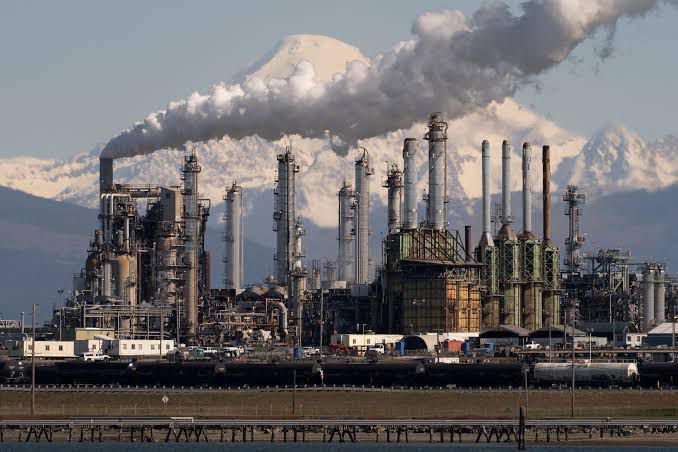On Monday, oil prices slightly dropped as supply constraints offset the expectation that the OPEC+ group would continue its voluntary output cuts until the middle of the year.
After rising 2.4% the previous week, Global Benchmark Brent fell 81 cents to $82.74 a barrel at 12:18 p.m. ET (1718 GMT). After rising 4.6% the previous week, U.S. West Texas Intermediate (WTI) dropped $1.20, or 1.5%, to $78.77 per barrel.
OPEC+ reaffirmed on Sunday that the voluntary output cuts of 2.2 million barrels per day would continue into the upcoming quarter, sticking to the original plans for the first quarter of this year.
Saudi Arabia, the head of OPEC+, reportedly announced on Sunday that it would prolong its voluntary 1 million barrels per day cut until the end of the second quarter, according to the state-owned Saudi Press Agency. Up until the end of June, Riyadh plans to keep up its crude production at about 9 million barrels per day.
Despite the OPEC+ announcement, oil prices are being pressured lower by the end of a mild winter in the Northern Hemisphere, according to John Kilduff, a partner at Again Capital LLC in New York. He underlined how the oil market depends on a constant demand for heating oil.

The Energy Information Administration released data last week that showed the distillate fuel oil (bpd) product supplies in the United States fell to 3.61 million barrels per day (bpd) in December. This includes heating oil. This is the lowest level since June 2020 and represents a decrease of roughly 10% from November.
Furthermore, John Kilduff stated that the talks about a cease-fire in Gaza were pushing oil prices lower.
On Sunday, Walt Chancellor, energy strategist at Macquarie, told clients,"As market expectations for a rollover had grown more apparent recently, we believe the extension may have been increasingly priced in.”
"With OPEC loadings appearing steady and aggregate OPEC supply potentially showing little effect from incremental voluntary cuts implemented in Q1, we do not view the extensions from the broader group as particularly impactful," Chancellor said.
Russia, a major participant in OPEC+, will cut its output and exports by a total of 471,000 barrels per day through the end of June. According to Viktor Katona, lead crude oil analyst at Kpler, Moscow offered in the first quarter to reduce its supplies by 500,000 barrels per day, primarily as a result of Ukrainian drone attacks on Russian refining facilities.
Furthermore, until the end of the second quarter, other major producers, including the United Arab Emirates and Iraq, will continue their voluntary production cuts of 163,000 and 220,000 barrels per day, respectively.
The OPEC+ decision was expected and did not move prices much, but traders noted that low-sulfur crude markets are tightening, which is widening Brent spreads. The first-month Brent crude contract's premium over the six-month contract came to $4.56 per barrel, suggesting a tight, prompt perception of supply.

According to senior vice president Jorge Leon of the consulting firm Rystad Energy, the OPEC+ cuts would cause the group's output to drop to 34.6 million barrels per day (bpd) in the second quarter. In contrast, an earlier prediction suggested that as producers eased supply cuts, output might exceed 36 million bpd in May.
In a statement released after the oil cartel's decision, Leon stressed that OPEC+'s action shows the group's strong unity, which had been called into doubt following Angola's withdrawal from OPEC after the ministerial meeting in November.
In the second quarter, he said, there is a strong commitment to keeping the price floor above $80 per barrel. He said that the decision to extend shows a strong commitment to maintaining this level and warned that a quick unwinding of OPEC+ cuts could cause oil prices to fall as low as $77 per barrel in May.
"Such a move by OPEC+ might also be seen as a sign that demand prospects in the second quarter are less optimistic than the group thought in November last year," he said.
Since the beginning of the year, oil prices have stayed within a narrow range of $75 to $85 per barrel despite supply cuts by OPEC+ and ongoing maritime attacks in the Red Sea by the Houthis.
Photo: Various Sources
(Inputs from agencies)
©️ Copyright 2024. All Rights Reserved Powered by Vygr Media.






















